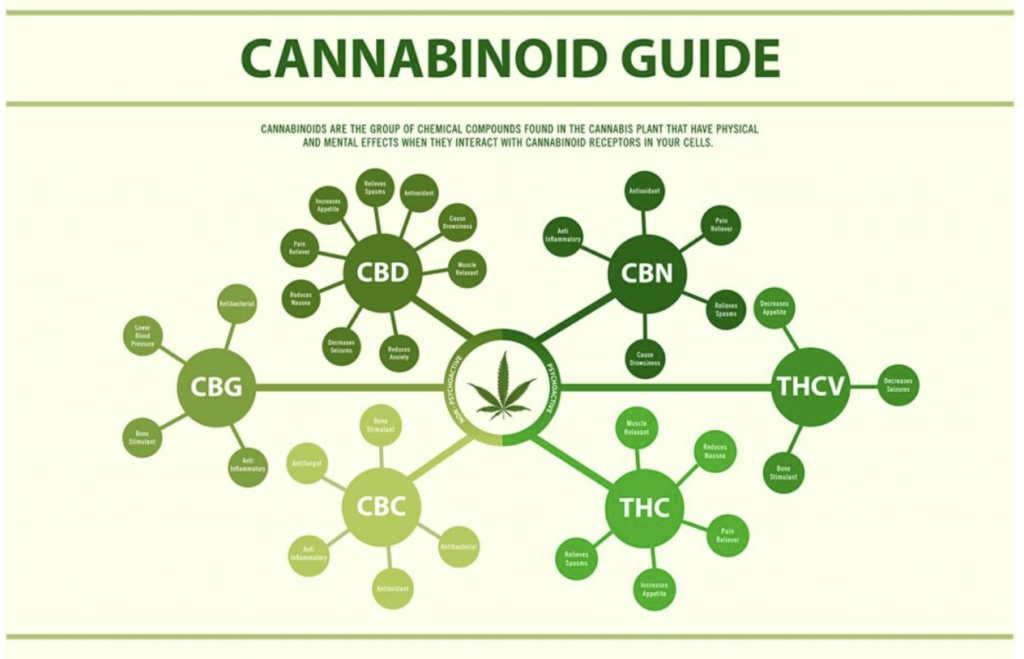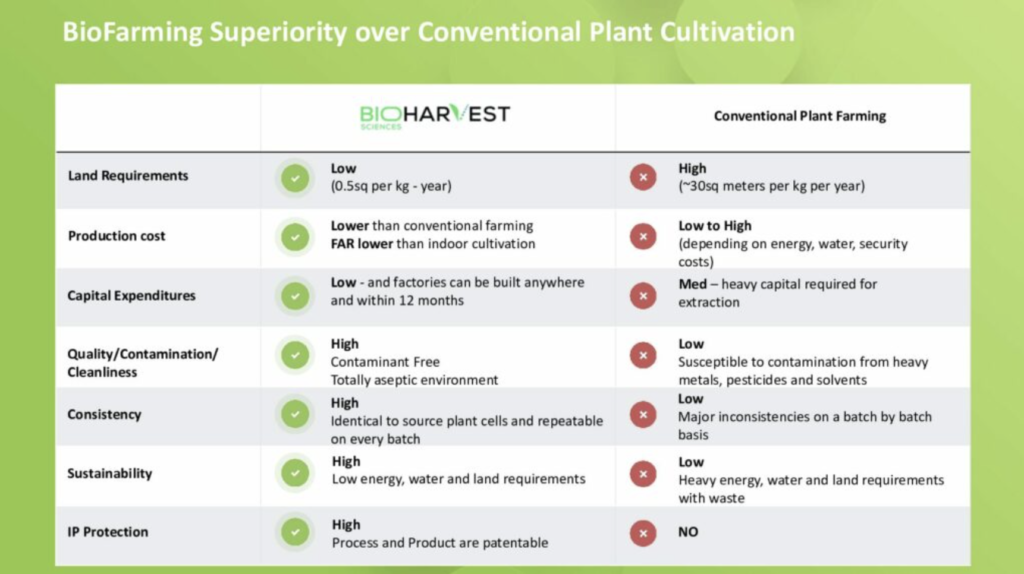BioHarvest Provides Unmatched Consistency & Variety in Cannabis
September 14, 2021 MJ Shareholders

Ryan Allway
September 14th, 2021
App, Exclusive, News, Top Story

The cannabis industry is quickly evolving from dried cannabis to beverages and other product formats. At the same time, the pharmaceutical industry is increasingly embracing cannabinoids for their potential therapeutic benefits. The challenge is converting raw plant material into a consistent format with the right mix of cannabinoids.
Let’s look at the importance of consistency in the cannabis industry, why some cannabinoids are so challenging to produce, and how BioHarvest Sciences Inc. (CSE: BHSC) is overcoming these hurdles with its innovative biofarming platform.
The Importance of Consistency
The cannabis and hemp industries typically use inexact science to produce cannabinoids. While some variability is okay for recreational markets, food- and medical-grade markets must meet higher regulatory standards. For instance, the large number of recalls affecting the recreational market would never be acceptable for pharmaceutical companies.
Cannabis and hemp cultivators typically use specific strains to achieve the right mix of cannabinoids. Aside from genetic drift over time, cannabinoid concentrations depend on plant specific light, temperature, humidity, and nutrients. The combination of genetic and atmospheric variability makes it hard to produce plants with a consistent profile.
The next stage of the process is extraction, which introduces more variables and uncertainty. For example, extractors must purchase raw materials free from heavy metals, pesticides, and other contaminants resulting from cultivation processes. Distillation processes also rely on exact temperature, pressure, and other factors to ensure purity.
Variety is Even More Challenging
Cannabis plants are inherently high in THC and CBD, but there are also hundreds of other potentially valuable cannabinoids. For example, CBN, CBG, CBC, and THCV are rare cannabinoids that makeup just 0.01% to 10% of the total plant mass. There’s a large amount of plant mass required to produce a relatively small amount of rare cannabinoids.

Rare Cannabinoids – Source: Rare Cannabinoid Company
These dynamics are particularly problematic for pharmaceutical companies seeking a specific rare cannabinoid for mass production. Synthetic cannabinoids provide a compelling alternative, but these molecules lack the entourage effect that involves terpenes. And emerging research suggests that terpenes could positively impact certain clinical outcomes.
Bioreactors Offer an Ideal Solution
BioHarvest Sciences Inc. (CSE: BHSC) starts with a single mother plant with the desired active phytocannabinoids. Then, the scientists take small parts from the plant and grow the cells on a Petri dish on a solid medium that contains nutrients for its growth. These cells become a microcosm of nature containing the components from the mother plant in their original structure.
These cells now constitute a “cell bank” for perpetual and homogeneous production. They can then be grown in liquid mediums in large bioreactors in 3-4 week cycles, which translates to 13-17 cycles each year. Furthermore, the biofarming process occurs in aseptic conditions in total compliance with ISO and GMP requirements, eliminating the potential for contamination.
After the cells reach adequate biomass, they are dried into a final powder form. The powder contains the desired active phytocannabinoids and other plant characteristics that create an entourage effect. These powders are ideal for use in cannabinoid-based foods, beverages, or pharmaceuticals that require perfect fingerprint consistency.

Benefits of Biofarming – Source: BioHarvest
In addition to unmatched consistency and rapid production cycles, the biofarming process uses far less water, energy, and other resources than conventional cultivation. These attributes are essential given the water shortages in the Western United States and the tremendous amount of energy required to grow cannabis indoors.
Looking Ahead
BioHarvest Sciences Inc. (CSE: BHSC) has built an impressive biofarming platform capable of scaling up the production of valuable cannabinoids.
The company has already leveraged the platform to extract valuable phytochemicals out of red grapes at scale. Its VINIA® product line is a proprietary red grape product containing the entire matrix of polyphenols in red grapes. Each 400mg serving contains the same amount of Piceid Resveratrol as a whole bottle of wine.
The same platform could revolutionize the cannabis industry as the company also sets its sights on unlocking the benefits of olives and pomegranates through other products.
For more information, visit the company’s website or download their investor presentation.
Disclaimer
The above article is sponsored content. CannabisFN.com and CFN Media, have been hired to create awareness. Please follow the link below to view our full disclosure outlining our compensation: http://www.cannabisfn.com/legal-disclaimer/
This article was published by CFN Enterprises Inc. (OTCQB: CNFN), owner and operator of CFN Media, the industry’s leading agency and digital financial media network dedicated to the burgeoning CBD and legal cannabis industries. Call +1 (833) 420-CNFN for more information.
About Ryan Allway
Mr. Allway has over a decade of experience in the financial markets as both a private investor and financial journalist. He has been actively involved in the cannabis industry since its inception, covering public and private companies.
MJ Shareholders
MJShareholders.com is the largest dedicated financial network and leading corporate communications firm serving the legal cannabis industry. Our network aims to connect public marijuana companies with these focused cannabis audiences across the US and Canada that are critical for growth: Short and long term cannabis investors Active funding sources Mainstream media Business leaders Cannabis consumers








